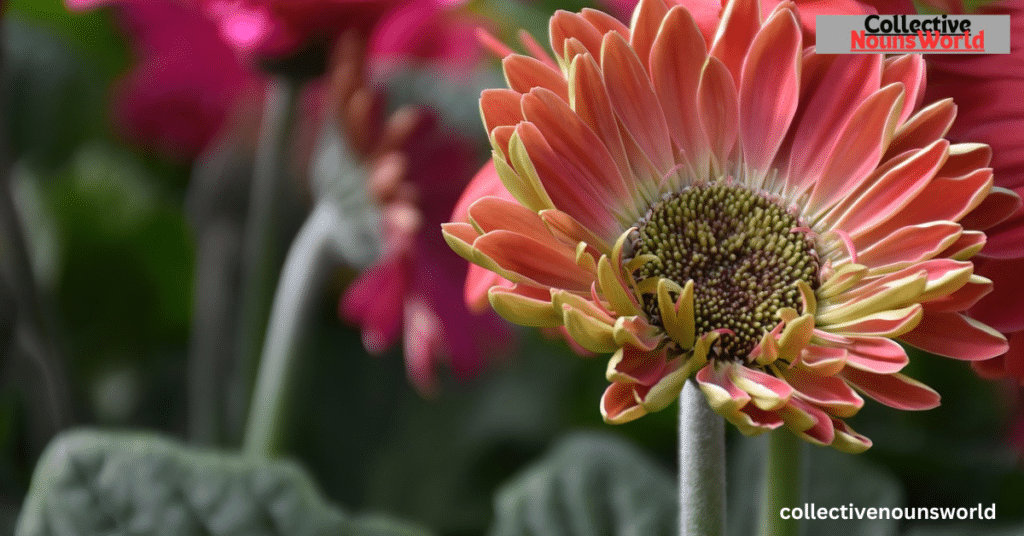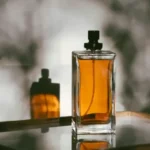“When it comes to describing a beautiful arrangement of blooms, the collective noun for flowers varies depending on the context. One of the most common terms is a ‘bouquet,’ often used to describe an artfully arranged collection of flowers, typically given as a gift or used for decoration. Additionally, you might hear ‘bunch,’ a more casual term that refers to a cluster of flowers gathered together. However, in poetic or literary contexts, terms like ‘garland’ or ‘posy’ may be used to evoke imagery of flowers worn or carried as symbols of beauty or celebration.
Before we delve deeper, here’s a quick reference table of the most common collective nouns for flowers:
| Collective Noun | Usage Context |
| Bouquet | Arranged, often gifted |
| Bed | Planted in the ground |
| Bunch | Loosely gathered |
| Garden | Large cultivated area |
| Arrangement | Artfully displayed |
| Posy | Small, hand-held collection |
Now, let’s explore each of these terms in more detail, along with some practical examples of how you might use them in everyday life.
A Bouquet of Beauty
When you think of a bouquet, you’re likely picturing a carefully arranged collection of flowers, often tied together and presented as a gift. This term is perfect for describing a group of flowers that have been intentionally selected and combined for their aesthetic appeal.
Example Scenario: Wedding Congratulations Email
Imagine you’re sending an email to your friend Sarah, who just got married. You might write:
Dear Sarah,
Congratulations on your wedding! I hope the bouquet you carried down the aisle was as beautiful as the love you and Alex share. May your life together be filled with as much joy and vibrancy as a florist’s shop on Valentine’s Day!
Best wishes,
[Your Name]
In this context, using “bouquet” evokes the traditional bridal flower arrangement, making your message more specific and meaningful.
Read more What is the Collective Noun for Papers?
Laying in a Bed of Flowers
A flower bed refers to an area of ground where flowers are planted, typically in a garden or landscaped area. This term is perfect when discussing ground planting or gardening efforts.
Example Scenario: Gardening Advice Text
Picture texting your neighbor about their new landscaping project:
Hey Jade!
Your new flower bed looks amazing! The mix of perennials and annuals you’ve chosen will give you blooms all season long. If you need any tips on maintaining it, just let me know. Happy gardening!
Cheers,
[Your Name]
Using “flower bed” here accurately describes the planted area and sets the tone for a conversation about gardening techniques.
Read more The Wondrous World of Rats: Discovering Their Collective Names
A Bunch of Joy
When we talk about a bunch of flowers, we’re usually referring to a group of flowers that have been loosely gathered, often picked from a garden or bought from a florist. This term is less formal than “bouquet” and implies a more casual collection.
Example Scenario: Thank You Note
Imagine writing a thank you note to a friend who brought you flowers when you were sick:
Dear Alex,
Thank you so much for the cheerful bunch of daisies you brought over last week. They really brightened up my room and lifted my spirits while I was under the weather. Your thoughtfulness means the world to me!
Gratefully,
[Your Name]
The term “bunch” here suggests a friendly, informal gesture, perfectly matching the tone of a heartfelt thank you note.
A Garden of Delights
A garden is perhaps the most expansive term we use when talking about flowers. It refers to a large, cultivated area where various plants, including flowers, are grown. This term encompasses not just the flowers themselves, but the entire ecosystem they’re part of.
Example Scenario: Community Newsletter
Imagine you’re writing a piece for your local community newsletter about a new public garden:
Dear Neighbors,
We’re thrilled to announce the opening of Sunnyville’s new Community Garden on Oak Street. This beautiful space features winding paths through beds of native wildflowers, a dedicated area for growing vegetables, and plenty of benches for sitting and enjoying nature. We invite all residents to come and experience this blooming oasis in the heart of our town.
Join us for the grand opening this Saturday!
Best regards,
[Your Name], Community Board President
Using “garden” in this context paints a picture of a diverse, living space that’s more than just a collection of flowers.
An Arrangement of Artistry
A flower arrangement refers to a decorative set of flowers that have been purposefully combined and displayed. This term is often used in professional or formal contexts, such as events or interior design.
Example Scenario: Event Planning Email
Picture yourself as an event planner, emailing a client about their upcoming gala:
Dear Ms. Thompson,
I’m excited to confirm that we’ve finalized the floral arrangements for your charity gala next month. Each table will feature a stunning centerpiece arrangement of roses, lilies, and orchids in shades of cream and blush, perfectly complementing your chosen color scheme. The grand entrance will be adorned with two large, cascading arrangements of seasonal blooms to create a truly breathtaking first impression for your guests.
Please let me know if you’d like to make any adjustments.
Best regards,
[Your Name], Event Coordinator
The term “arrangement” here conveys a sense of professional artistry and intentional design, appropriate for a formal event.
Read more What is the Collective Noun for Keys?
Nature’s Vocabulary: Other Flowery Terms
While we’ve covered the most common collective nouns for flowers, the rich tapestry of the English language offers us even more ways to describe these natural wonders. Let’s explore some additional terms that might come in handy when discussing our floral friends.
Posy: A Handful of Charm
A posy is a small bunch of flowers, often gathered or tied together and typically given as a gift. This term has a quaint, old-fashioned charm to it.
Example Scenario: Historical Fiction Writing
Imagine you’re crafting a scene for a historical novel set in Victorian England:
As Emma stepped into the bustling marketplace, a young boy approached her, his grimy hands clutching a small posy of violets. “Penny for a posy, miss?” he chirped. Emma smiled, reaching for her coin purse. The sweet scent of the tiny purple blooms reminded her of her grandmother’s garden, a memory as delicate as the flowers themselves.
Using “posy” here adds a touch of historical authenticity to the scene.
The Language of Flowers: More Than Just Words
When we talk about flowers, we’re not just discussing plant types or colors. Flowers have their own language, with different blooms carrying various meanings and symbolism. This flower meaning has been used for centuries to convey messages without words.
Example Scenario: Florist’s Website Content
Imagine you’re writing content for a florist’s website, explaining the meaning behind different flowers:
At Petal & Stem, we believe in the power of floral language. Each bloom we select for your arrangement carries its own special meaning:
– Roses: Love and passion
– Lilies: Purity and refined beauty
– Sunflowers: Adoration and loyalty
– Orchids: Luxury and strength
Whether you’re expressing love, sympathy, or congratulations, let our expertly crafted arrangements speak for you. Our florists are well-versed in the language of flowers and can help you create the perfect bouquet to convey your message.
This approach adds depth to the discussion of flowers, going beyond mere aesthetics to touch on their cultural and emotional significance.
From Wildflowers to Wedding Flowers: The Versatility of Blooms
Flowers play a role in countless aspects of our lives, from the wildflowers we admire on a countryside walk to the elaborate wedding flowers that set the tone for a couple’s special day. Their versatility is part of what makes them so beloved.
Example Scenario: Travel Blog Post
Picture yourself writing a blog post about a recent hiking trip:
As I crested the hill, my breath caught in my throat. Before me stretched a vast meadow, carpeted in a riot of wildflowers. Purple lupines nodded in the breeze alongside cheerful yellow buttercups and delicate white yarrow. It was nature’s own flower bed, more beautiful than any cultivated garden I’d ever seen.
I couldn’t resist gathering a small bunch to press in my journal, a colorful reminder of this perfect summer day. As I carefully selected each bloom, I found myself thinking about how these same types of flowers might be lovingly arranged for a rustic wedding bouquet or a homey table centerpiece.
There’s something magical about flowers in their natural habitat. They remind us of the raw beauty of the world, unshaped by human hands. Yet they also inspire us to create our own beauty, arranging and cultivating them in endless variations. From wildflower meadows to wedding aisles, flowers truly are nature’s most versatile decoration.
This passage demonstrates how we can weave together various aspects of flowers – from wild growing to intentional arrangements – creating a rich narrative that touches on multiple facets of our relationship with these natural wonders.
The Art and Science of Planting Flowers
For many, the joy of flowers extends beyond simply admiring or arranging them. Planting flowers is a rewarding hobby that combines artistic sensibility with horticultural knowledge. Whether you’re cultivating a small window box or managing a large garden, understanding the basics of flower planting can help you create your own little piece of floral paradise.
Example Scenario: Gardening Magazine Article
Imagine you’re writing an article for a gardening magazine about creating a colorful flower garden:
“Creating Your Own Rainbow: A Guide to Planting a Colorful Flower Garden”
Nothing brightens up a yard quite like a vibrant flower garden. With some planning and a bit of elbow grease, you can create a stunning display that will be the envy of the neighborhood. Here’s how to get started:
1. **Choose Your Palette**: Consider the **flower colors** you want in your garden. Remember the color wheel – complementary colors (those opposite each other on the wheel) create striking contrasts, while analogous colors (those next to each other) create harmonious blends.
2. **Plan for All Seasons**: Select a mix of annuals and perennials to ensure you have blooms throughout the year. Spring bulbs like tulips and daffodils can be followed by summer-flowering annuals like petunias and marigolds, with autumn-blooming chrysanthemums to round out the year.
3. **Consider Height and Spread**: Plant taller flowers at the back of the bed, medium-height plants in the middle, and shorter flowers in the front for a layered look.
4. **Group in Odd Numbers**: Planting in groups of 3, 5, or 7 of the same flower creates a more natural, pleasing look than even-numbered groupings.
5. **Don’t Forget Foliage**: While flowers are the stars, interesting foliage can provide texture and continuity in your garden even when blooms are scarce.
Remember, creating a beautiful flower garden is an ongoing process. Don’t be afraid to experiment with different combinations and learn from both your successes and failures. Happy planting!
This article combines practical advice with encouragement, helping readers understand the principles behind creating an attractive flower garden.
The Joy of Flower Gifting
Flower gifting has been a tradition across cultures for centuries. Whether it’s a single rose or an elaborate arrangement, flowers have a unique ability to convey emotions and celebrate special moments.
Example Scenario: Blog Post for a Flower Delivery Service
Imagine writing a blog post for a flower delivery service about the art of gifting flowers:
“Say It With Flowers: The Timeless Art of Floral Gifting”
In a world of high-tech gadgets and instant messages, there’s something refreshingly sincere about gifting flowers. These natural wonders have been used to express everything from passionate love to deep sympathy for generations, and their power to convey emotion remains undiminished.
Why are flowers such perfect gifts? Perhaps it’s their ephemeral nature – like the moments we celebrate, they are beautiful but fleeting, reminding us to appreciate the present.
Tips
Here are some tips for choosing the perfect floral gift:
1. **Consider the Occasion**: A vibrant bouquet might be perfect for a birthday, while a more subdued arrangement could be appropriate for expressing sympathy.
2. **Think About the Recipient**: Does your friend have a favorite flower or color? Personalizing your gift shows extra thoughtfulness.
3. **Factor in Seasonality**: Seasonal flowers are often fresher and more cost-effective.
4. **Don’t Forget About Presentation**: Sometimes, the vase or wrapping can be as important as the flowers themselves.
5. **Include a Heartfelt Message**: A few sincere words can elevate your gift from lovely to truly memorable.
Remember, the most important aspect of flower gifting is the thought behind it. Whether you’re sending a lavish arrangement or a simple posy, your gesture is sure to brighten someone’s day.
This blog post combines practical advice with emotional appeal, highlighting the enduring tradition of flower gifting in our modern world.
In conclusion, the world of flowers is as diverse and rich as the blooms themselves. From the carefully cultivated specimens in our gardens to the wild beauties we encounter on nature walks, flowers continue to captivate us with their colors, scents, and symbolism.
Whether we’re arranging them in elegant bouquets, planting them in beds, or simply admiring a bunch in a vase, flowers have a unique ability to brighten our lives and express our emotions. So the next time you’re surrounded by these natural wonders, remember – you’re not just looking at flowers, you’re experiencing a bouquet of nature’s finest art.

Luna Jasper is an experienced blogger with a passion for language and grammar. At **Collective Nouns World**, she shares her expertise in exploring the fascinating world of collective nouns, making learning both engaging and fun. With years of writing and research under her belt, Luna’s insightful articles help readers understand and appreciate the English language.







